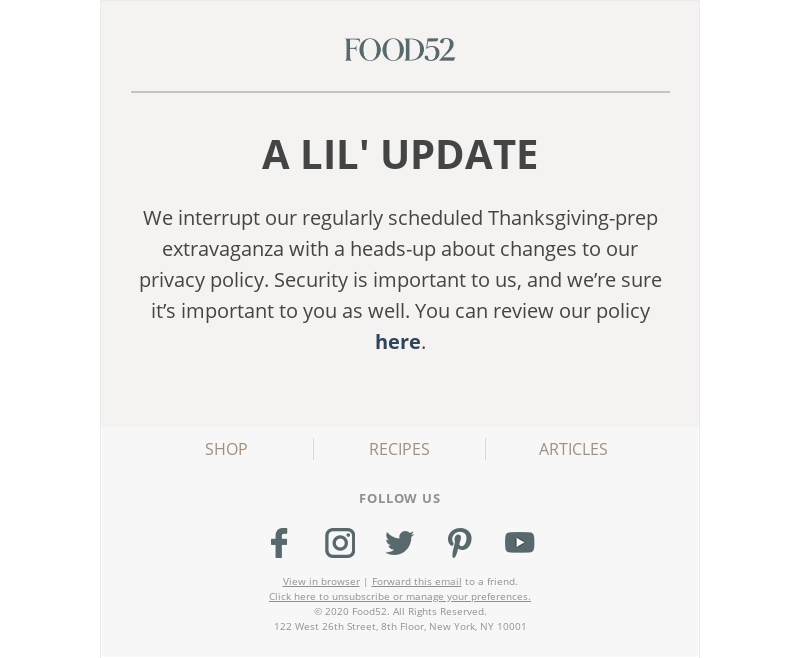What is customer-centric email marketing?


If you want to drive the marketing results you want, you need to be thinking about the experience you’re delivering. What are the benefits for the subscriber?
It’s important to remember that email is an inbound marketing channel. Customers have chosen to come to you. You have to give them a reason to stay.
As well as adopting a customer-centric marketing approach, you need to remember your audience is human first and customers second. You need to market with kindness and a human touch.
Marketing with kindness
Marketing with kindness, putting the human touch back into your work, has huge benefits for you and your business.
Modern marketing relationships are built on a foundation of trust. Customers trust word-of-mouth and recommendations above any other form of advertising and marketing. Building customer confidence and trust in your brand will turn one-time customers into loyal brand advocates. And that’s the ultimate goal.
Customer-centric marketing, interwoven with kindness, is the only way brands can deliver experiences audiences want to share. When audiences leave an interaction with your brand feeling positive, they’re going to remember you.
What is kindness in marketing?
Have you ever received an email around Mother’s Day asking if you’d like to opt out of holiday marketing?
That’s marketing with kindness.
It’s about being compassionate and understanding of your audience – recognizing that they’re human and talking to them as such. Marketing is only effective if you understand the needs of your audience. When you take the time to get to know your customers you can deliver them an experience that far exceeds their expectations.
Taking into consideration things such as customer feelings around holidays, causes they’re interested in, demonstrating compassion and shared values is a guaranteed way to build customer trust.
Examples of marketing with kindness
Compassion and understanding
When it comes to kindness and compassion in your marketing you don’t have to do anything fancy. In fact, simplicity is best. Personal care brand Aesop keep the message short and simple. It’s clear and reassuring, showing the recipient that it recognizes them as individuals, not just contacts in a database.
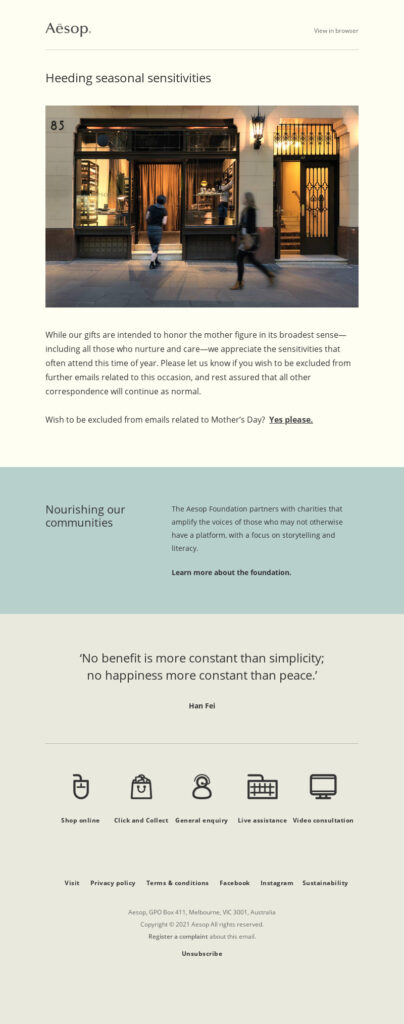
Brand activism
Audiences care and they want the brands they love to share their values. That’s why modern shoppers are happy to spend more on products and services from brands that demonstrate corporate social responsibility and brand activism.
Everlane is a brand that cares a lot. During the incredibly busy and revenue-generating BFCM sales period, it promotes its Black Friday Fund. A charitable fund set up by Everlane, customers know when they’re shopping with the brand, they’re also helping a good cause.
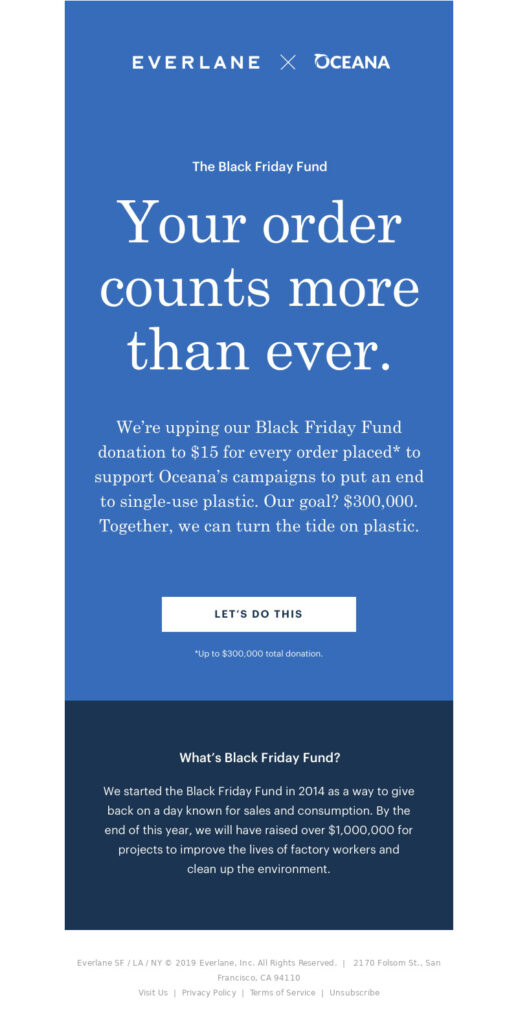
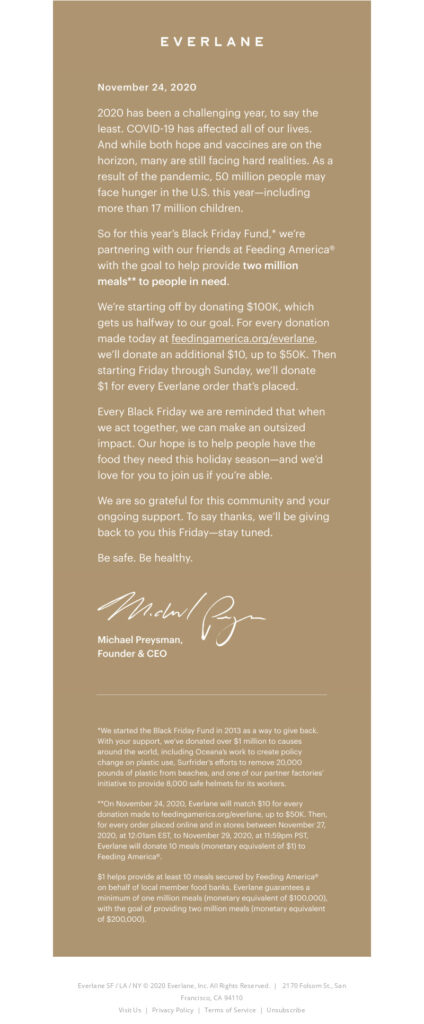
Marketing with transparency
Honesty and transparency are the foundation of trust. Your audience wants to know what you’re doing-especially when it comes to collecting their data.
It’s a brand’s duty to be responsible for its marketing practices. Concern over data security is on the rise and customers know that their data is a valuable commodity. For a customer to hand over data they need to trust you.
Trust is built when you’re clear and open about why you’re collecting data. If a customer sees the value in exchanging information, they’ll be more inclined to let you know more about them.
What is transparent marketing?
Marketing with transparency means clearly explaining what you’re doing and why you’re doing it.
So, when a new website visitor subscribes to your email marketing, you clearly explain your privacy policy and what you’re going to do with the data you’re collecting.
Throughout your interactions, customers should be made fully aware of what data you’re collecting and why you’re collecting it.
Examples of transparent marketing
Data collection
To deliver the memorable experience that drives customers towards conversion, you need data. It’s how you collect it that makes the difference to your email readers. Do you simply ask for information, or do you online the benefits that come with sharing their data?
Sports brand Under Armour makes it clear to the recipient that by helping them build a customer profile, the reader will receive a personalized experience. Who wouldn’t want to interact with this email?

Surveys
There are many ways you can get to know your customers, and a survey is a great tool to collect vital information to improve your brand and product offering. Offering a cheeky chance to win a free gift card adds value to the exchange, encouraging readers to complete the questionnaire.
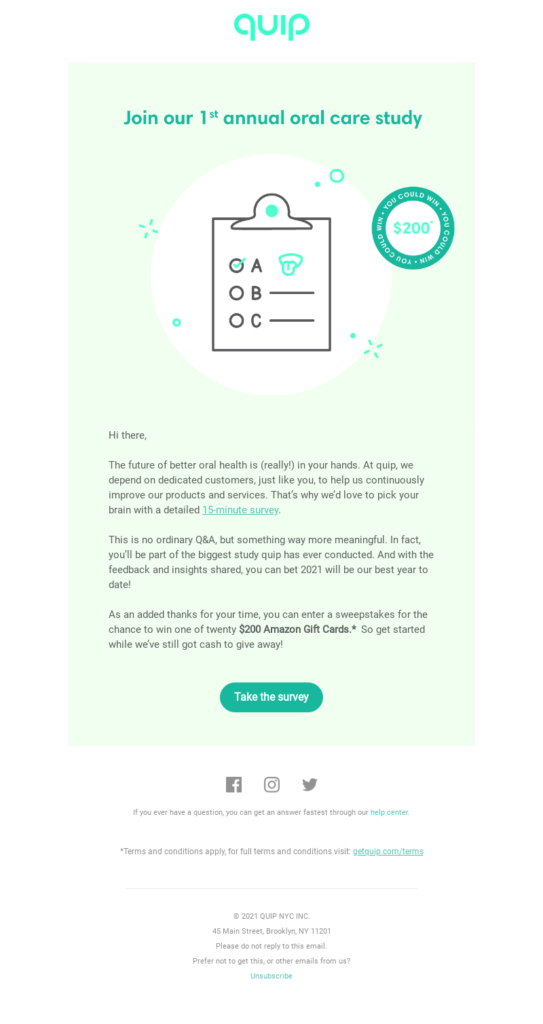
Policy updates
Updates to policies can seem boring, especially when you’re in the middle of a money-making campaign, but they’re vital nonetheless. Customers need to know how changes are going to affect them. The trick to effectively communicating these updates is simplicity. Food52 does this perfectly. It’s short, simple, and reminds the reader that this brief interruption in cookery content is for their benefit.
